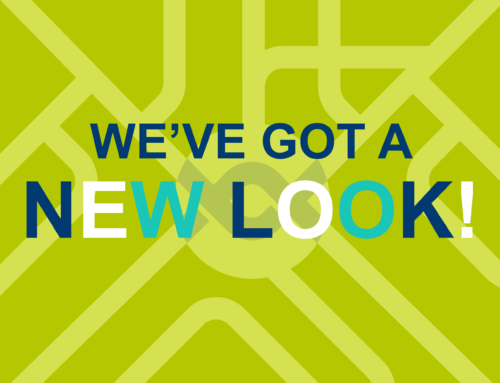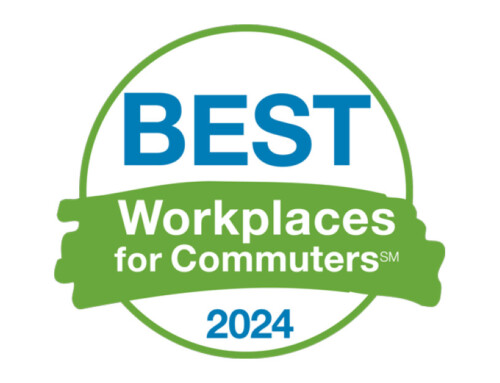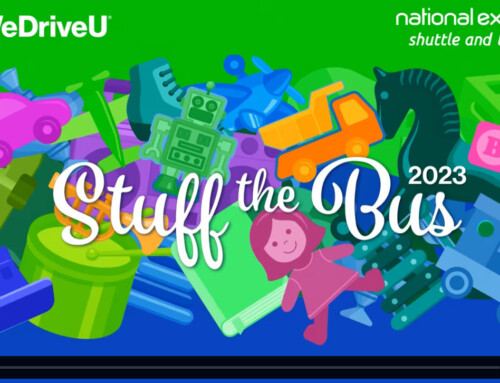New Year, New Transportation Possibilities for Workplaces and Campuses
WeDriveU, Tesla, and Wells + Associates weigh in on commuting trends for 2021.
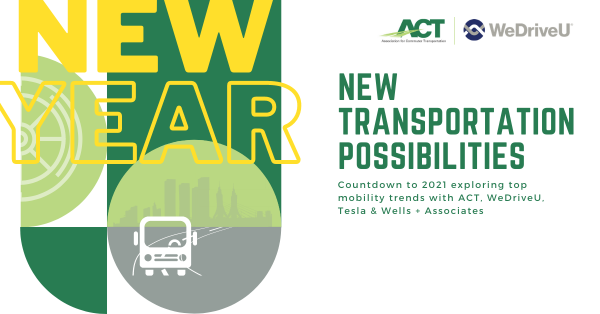
In a webinar for the Association for Commuter Transportation (ACT), WeDriveU led a discussion on opportunities for transportation and parking pros to drive significant value – everything from creative ways to fund employee commute programs to electric vehicles.
Read on for the recap, or watch the full discussion with WeDriveU’s Head of Customer Success, Shawn Kelly; Tesla’s Sr. Transportation Project Manager, Melvin Justice; and Wells + Associates’ Principle, Justin Schor.
Shawn from WeDriveU kicked-off looking at the shift from telecommuting back to commuting.
“We were really struck by the massive opportunity for our community to take what we’ve learned from the pandemic and head into the new year with a new outlook.” – Shawn Kelly, WeDriveU
Trend #1: Return to Office/Campus
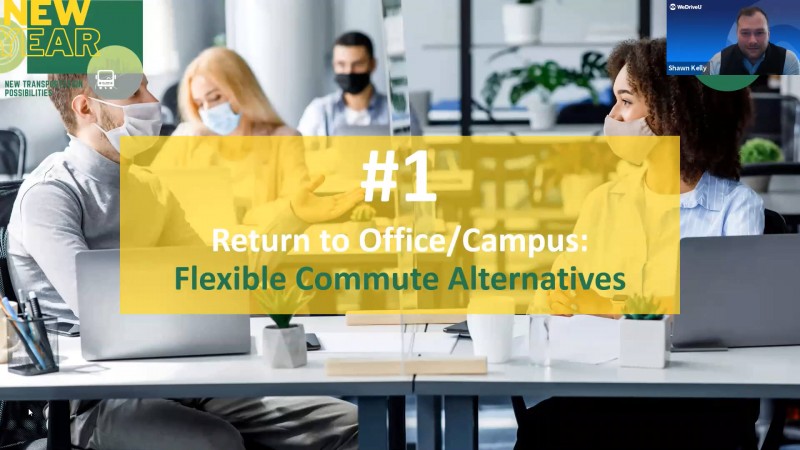
Encouraging vaccine updates are driving renewed anticipation for getting back to offices and campuses. Speakers acknowledged the strong foundation of safety protocols and best practices in place to bolster commuter confidence.
ACT polled webinar attendees on their organization’s projected return. Only 15% of the 109 respondents had returned, while 6% planned to return in Q1, 9% in Q1, 17% in Q3 and 1% in Q4. 52% had not set a date.
Cross-Functional Task Forces
Cross-functional communications are a key success factor, with the panel emphasizing the need to re-educate commuters and encourage alternatives to driving to work alone. Organizations can leverage a range of innovative technologies to serve commuters post-COVID. Curated real-time data is key.
Over-Communicating
Shawn emphasized the benefits of over-communicating, noting it’s “Not just communication through the transportation team or directly to your employees, it’s really, ‘How are you handling cross-functional communication throughout the organization?’”
Over-communication helps employees feel comfortable. If your employees are re-educated on alternative transportation modes — even active transportation — they will likely be more open to changing habits as they return to the workplace. This is a win for everyone.
Shawn reiterated the opportunity to: “Challenge behavior, eliminate fear and make it fun, comfortable and safe heading into 2021.”
Flexible Commute Alternatives
Melvin from Tesla underscored many avenues of opportunity for TDM professionals.
Melvin expects employers will look at “What’s going to be in the best interest of our employees to get them back safely but then also make them feel confident so everyone has a mode out there: bike, vanpool, whatever you call it.”
Melvin reiterated the many flexible, multimodal commute options available, noting the importance of re-enrolling and re-educating employees.
Trend #2: Sustainable Mobility
The next trend to watch involves a popular session from the 2020 ACT International Conference: “Electrifying Your Commuter Fleet.”
“We’re hearing from a lot of partners that this will be a big year for electric vehicles, so some are taking advantage of downtime to transition fleets,” Shawn added.
He said, “one of our favorite takeaways from the ACT Conference was when Genentech’s speaker AJ remarked, ‘Going electric is doable. That’s my take-home point. You can do this.’”
This is a perfect opportunity “for companies, properties, and universities to dip their toes into electric vehicles, so it gives you the chance to pilot something in a certain operating environment before investing in major infrastructure so that’s something we’re excited about,” said Shawn.
There’s an upside for properties, cities, and communities, according to Justin Schor of Wells + Associates. Justin elaborated on how they’re focusing on charging stations, alternative fuel vehicles, and more, and explained how they stand to benefit in terms of tying these initiatives to LEED points.
“What we’re seeing moving forward is areas that are downtowns or business districts trying to comply with green policies looking toward ways they can do electric shuttles and shuttles in general,” said Justin.
Melvin expanded on what properties are doing to be part of the electric revolution, looking at areas like shuttles and vanpools.
Trend #3: Active Transportation
Active transportation is getting a lot of attention due to commuting shifts.
For example, Shawn said there’s a lot of excitement around this in Boston, such as “protected bike lanes that have been established to encourage people to get out there and explore alternative commuting options.”
Shawn is particularly excited about technologies that influence commuters to consider and select these active transportation modes ‘in-the-moment.’
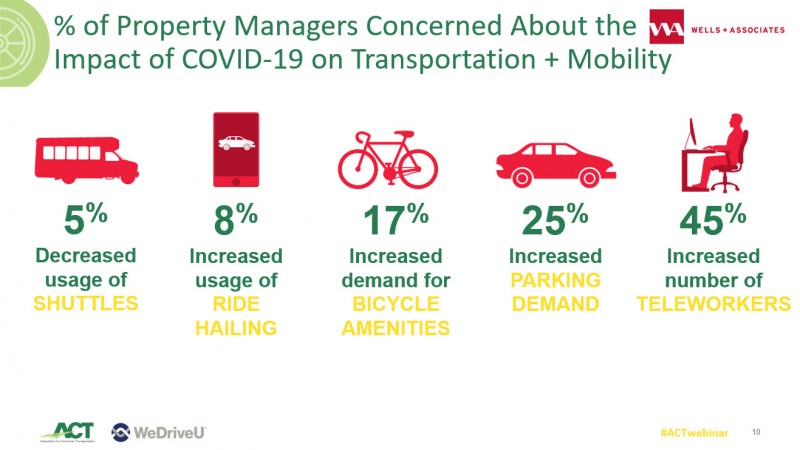
Justin highlighted the increased demand for bicycle amenities, adding, “we’re dealing with properties that are spending thousands of dollars looking at ways to build out sections of their lobby to accommodate more internal secure parking.”
As a result of these efforts, “a lot more people will feel comfortable using active transportation,” said Justin.
Justin also echoed Shawn’s point that with the infrastructure being put in place, “we’re expecting a lot of that to stick moving forward and that’s what these offices are accounting for is not just a surge due to COVID but a continued engagement in it thereafter.”
Trend #4: Creative Funding Approaches
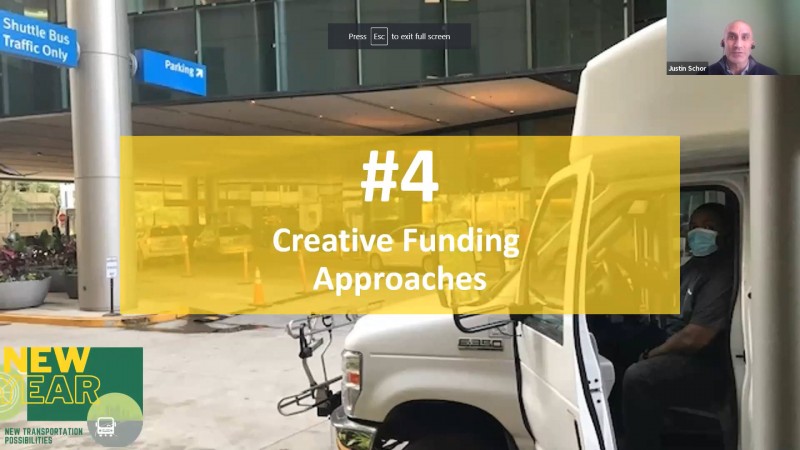
Organizations can prepare for a re-surge in commuting by exploring creative funding approaches and shared programs.
Shawn points to unique opportunities around private and public-private partnerships to help subsidize or get programs off the ground.
With tenants interested in micromobility options like e-scooters as a last mile connection to transit systems in the area, Justin added that advertising is a creative way to offset the cost of the charging infrastructure.
Justin said, “It is a viable solution that we’re starting to see to bring that type of micromobility out to the suburbs, so sometimes it’s not about what you can take out of your pocket but how you can negotiate a really creative deal to make it come together.”
Shawn said a similar concept extends to shuttles. “We have a couple examples [where] we’ve worked with an advertising agency to wrap buses.”
Trend #5: Performance Metrics During & Beyond COVID-19
How do you bring all these efforts together and drive additional value in 2021? KPIs. It’s an area of significant opportunity for properties and workplace services teams.
According to Justin, “the challenge for property managers and for all employers is how do you make the experience of coming to work one that is positive.” He continued, “It’s about the experience coming to and from the building and that starts from home, and if it’s not a positive one people will just do what we’re doing now. It’s about getting creative.”
Listen to the full discussion with audience Q&A on the effectiveness of platforms over the use of siloed apps, leveraging technology for social equity and hybrid workplaces of the future.
Learn more
Learn more about WeDriveU private transportation solutions, including: corporate shuttles, university shuttles, hospital shuttles and return to work solutions.

